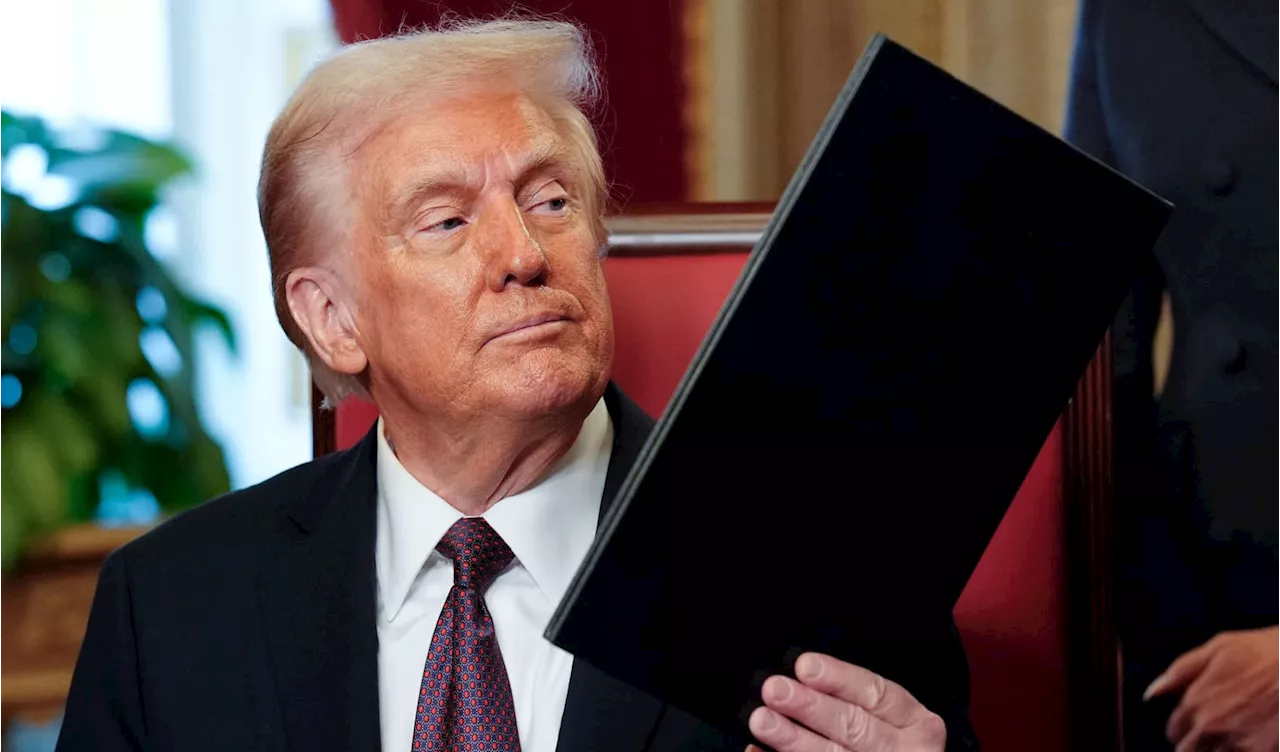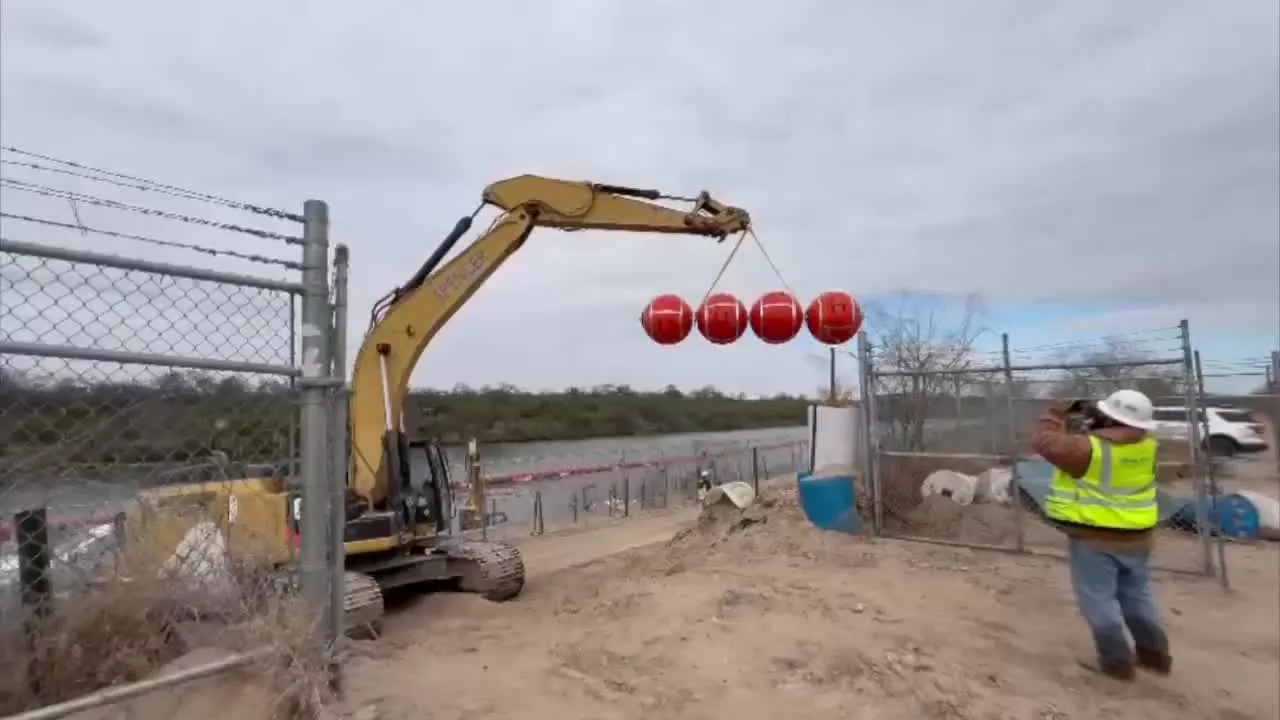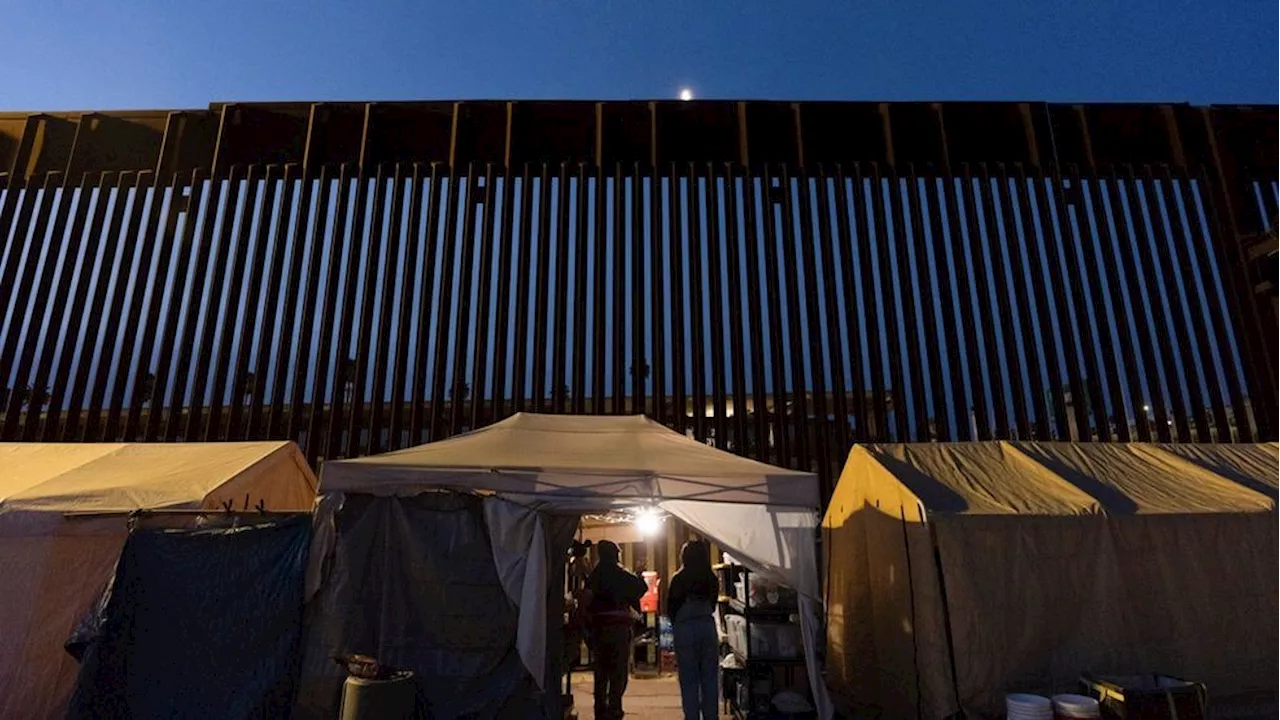President Donald Trump is deploying 1,500 active duty troops to the US-Mexico border, marking an escalation in his efforts to secure the border. The deployment is in line with Trump's campaign promises and executive orders, and aims to support border patrol agents with logistics, transportation, and barrier construction. The legality of troops conducting law enforcement activities remains unclear, with the possibility of invoking the Insurrection Act to allow for such actions.
A Cold Weather Advisory is in effect for all of Ohio through midday Wednesday. Wind chills as cold as -20 are possible. The Pentagon will begin deploying as many as 1,500 active duty troops to help secure the southern border in the coming days, U.S. officials said Wednesday, putting in motion plans President Donald Trump laid out in executive orders shortly after he took office to crack down on immigration.
Acting Defense Secretary Robert Salesses was expected to sign the deployment orders on Wednesday, but it wasn't yet clear which troops or units will go, and the total could fluctuate. It remains to be seen if they will end up doing law enforcement, which would put American troops in a dramatic new role, not done in recent history. The active duty forces would join the roughly 2,500 U.S. National Guard and Reserve forces already there. There are currently no active duty troops working along the border.The forces are expected to be used to support border patrol agents, with logistics, transportation and construction of barriers. They have done similar duties in the past, when both Trump and former President Joe Biden sent active duty troops to the border. Troops are prohibited by law from doing law enforcement duties on the border, but that may change. Trump has directed through executive order that the incoming secretary of defense and incoming homeland security chief report back within 90 days if they think an 1807 law called the Insurrection Act should be invoked. That would allow those troops to be used in civilian law enforcement on U.S. soil. The widely expected deployment, coming in Trump's first week in office, was an early step in his long-touted plan to expand the use of the military along the border. In one of his first orders on Monday, Trump directed the defense secretary to come up with a plan to 'seal the borders' and repel 'unlawful mass migration.' On Tuesday, just as Trump fired the Coast Guard commandant, Adm. Linda Fagan, the service announced it was surging more cutter ships, aircraft and personnel to the 'Gulf of America' — another nod to the president's directive to rename the Gulf of Mexico. Trump said during his inaugural address on Monday that 'I will declare a national emergency at our southern border. All illegal entry will immediately be halted, and we will begin the process of returning millions and millions of criminal aliens back to the places in which they came.' In his first term, Trump also ordered active duty troops to the border to help the Department of Homeland Security and border control agents, in response to a caravan of migrants slowly making its way through Mexico toward the United States in 2018. signed Monday, Trump suggested the military would help DHS with 'detention space, transportation (including aircraft), and other logistics services.' U.S. active duty troops are forbidden from doing law enforcement duties under the Posse Comitatus Act, a 19th century federal law. So they can't arrest or detain people at the border. The Insurrection Act allows presidents to call on reserve or active duty military units to respond to unrest in the states, an authority that is not reviewable by the courts. During the 2018 deployment, more than 7,000 active duty troops were sent to Texas, Arizona and California, including military police, an assault helicopter battalion, various communications, medical and headquarters units, combat engineers, planners and public affairs units. At the time, the Pentagon was adamant that active duty troops would not do law enforcement. So they spent much of their time transporting border patrol agents to and along the border, helping them erect additional vehicle barriers and fencing along the border, assisting them with communications and providing some security for border agent camps. The military also provided border patrol agents with medical care, pre-packaged meals and temporary housing. Normally, in deployments to the border in support of the Department of Homeland Security, Pentagon officials request specifics from DHS on what needs to be accomplished, and military leaders then decide what troops should go and how many
Donald Trump US-Mexico Border Military Deployment Immigration Insurrection Act Border Security
United States Latest News, United States Headlines
Similar News:You can also read news stories similar to this one that we have collected from other news sources.
 Bitcoin's Bullish Bias vs. S&P 500's Defensive Positioning Ahead of Trump's InaugurationCrypto Daybook Americas reveals a significant divergence between Bitcoin and the S&P 500. While Bitcoin aims to stay above $100,000 with bullish options activity, the S&P 500 shows greater downside risk due to concerns surrounding President-elect Donald Trump's inauguration. This raises questions about Bitcoin's reaction to a potential market sell-off on January 20th.
Bitcoin's Bullish Bias vs. S&P 500's Defensive Positioning Ahead of Trump's InaugurationCrypto Daybook Americas reveals a significant divergence between Bitcoin and the S&P 500. While Bitcoin aims to stay above $100,000 with bullish options activity, the S&P 500 shows greater downside risk due to concerns surrounding President-elect Donald Trump's inauguration. This raises questions about Bitcoin's reaction to a potential market sell-off on January 20th.
Read more »
 S&P 500 Ends Strong Week on High as Trump-China Call Eases Trade War WorriesThe S&P 500 climbed to a strong finish on Friday, driven by bullish investor sentiment ahead of Donald Trump's inauguration. While concerns remain regarding potential trade tariffs, Trump's positive phone call with Chinese President Xi Jinping on Friday eased anxieties. The market also awaits earnings reports from major tech, industrials, and consumer companies next week.
S&P 500 Ends Strong Week on High as Trump-China Call Eases Trade War WorriesThe S&P 500 climbed to a strong finish on Friday, driven by bullish investor sentiment ahead of Donald Trump's inauguration. While concerns remain regarding potential trade tariffs, Trump's positive phone call with Chinese President Xi Jinping on Friday eased anxieties. The market also awaits earnings reports from major tech, industrials, and consumer companies next week.
Read more »
 S&P 500 futures are flat as Trump says he's considering tariffs on Canada and MexicoTrump’s executive orders included overhauls to U.S. trade policy and declaring a national emergency at the southern border.
S&P 500 futures are flat as Trump says he's considering tariffs on Canada and MexicoTrump’s executive orders included overhauls to U.S. trade policy and declaring a national emergency at the southern border.
Read more »
 S&P 500 Faces a Contrarian Crossroads as Trump Era ReturnsStocks Analysis by Gary Tanashian covering: S&P 500, SPDR® S&P 500. Read Gary Tanashian's latest article on Investing.com
S&P 500 Faces a Contrarian Crossroads as Trump Era ReturnsStocks Analysis by Gary Tanashian covering: S&P 500, SPDR® S&P 500. Read Gary Tanashian's latest article on Investing.com
Read more »
 Stock market today: S&P 500 closes higher on Trump-fueled optimismStock market today: S&P 500 closes higher on Trump-fueled optimism
Stock market today: S&P 500 closes higher on Trump-fueled optimismStock market today: S&P 500 closes higher on Trump-fueled optimism
Read more »
 Texas Deploys More Buoys at Border, Awaits Trump's Action on ImmigrationFollowing President Trump's inauguration, Texas Governor Greg Abbott has expanded the use of floating barriers along the Rio Grande, a move that comes amid heightened attention to border security. The deployment of these buoys continues a policy initiated under Abbott's tenure and faces ongoing legal challenges from the Biden Administration. Trump, meanwhile, is expected to sign several executive orders on his first day in office addressing illegal immigration, including the deployment of troops to the southern border.
Texas Deploys More Buoys at Border, Awaits Trump's Action on ImmigrationFollowing President Trump's inauguration, Texas Governor Greg Abbott has expanded the use of floating barriers along the Rio Grande, a move that comes amid heightened attention to border security. The deployment of these buoys continues a policy initiated under Abbott's tenure and faces ongoing legal challenges from the Biden Administration. Trump, meanwhile, is expected to sign several executive orders on his first day in office addressing illegal immigration, including the deployment of troops to the southern border.
Read more »
